Interior Design For Small Bedroom, Ideas on Display
We often lose the battle for space just because we are put off from the very start by the small proportions. We are completely unaware though that a bedroom, however small it may be, can compensate through an interior design highlighting a warm and welcoming atmosphere which will finally blur the physical limits. Bu using small tricks, such as soft, neutral colors, mirrors and an intelligent use of accessories, you can finally evade the image of a small room while giving the bedroom its primary role of a space where we find the much necessary comfort. Below are several interior design for small bedroom ideas:
First, if the room is small, respect that! Keep the room fitted out just as much as to answer your main needs. The secret of this bedroom in the wooden house is the white painted walls which gives this impression of depth, storage spaces under the bed, on its side, above it and the strictly necessary furniture, such as a table and two chairs. A bedroom has to stay a resting space so keep it uncluttered.
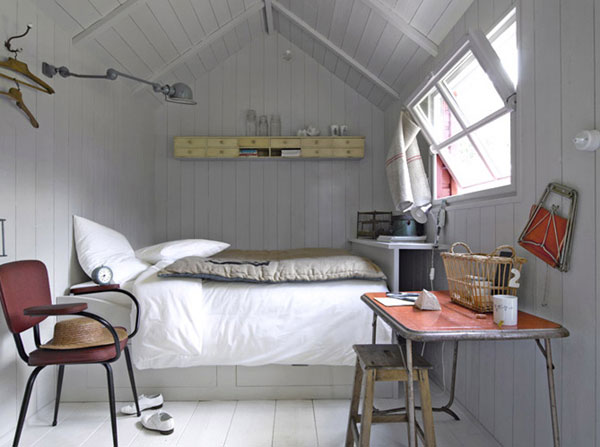
Interior design for small bedroom ideas – small and cozy
White and strong, vivid colors – a combination which makes the room more dynamic and creates the feeling of an extended space. Use these colors in accessories, rugs and curtains.
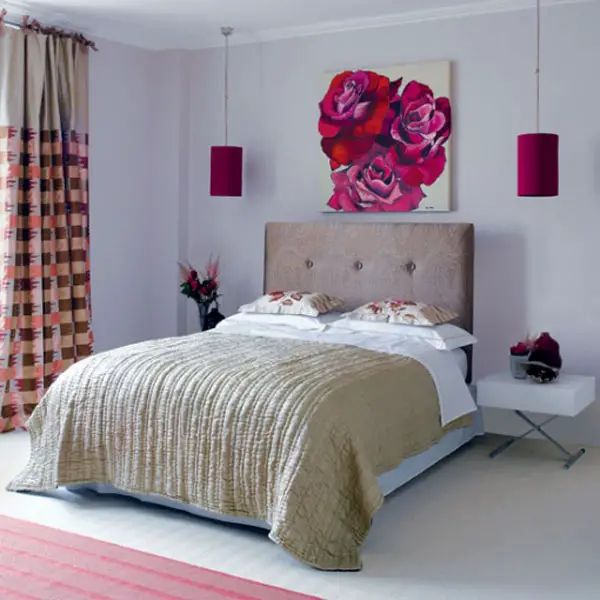
Interior design for small bedroom ideas – a dynamic room
If you cannot expand horizontally, then go vertically, as seen in the image below. This room proves that you can still create a functional, stylish bedroom in a small area. A bunk bed with a built-in desk frees up space for a sofa, while built-in storage, hidden hanging rails and wall pegs ensure the room is kept clutter-free.
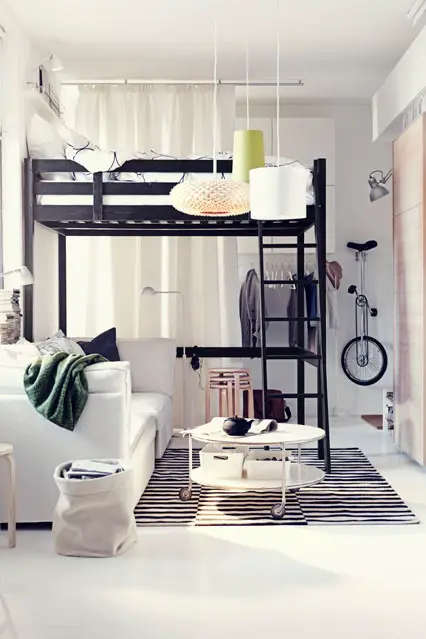
Interior design for small bedroom ideas – go vertical
Sometimes, a large window at the end of the space works wonder through symmetry – placing the bed, which is flanked by two stylish mid-century wooden nightstands, directly in the middle of the room, all under plenty of natural light.
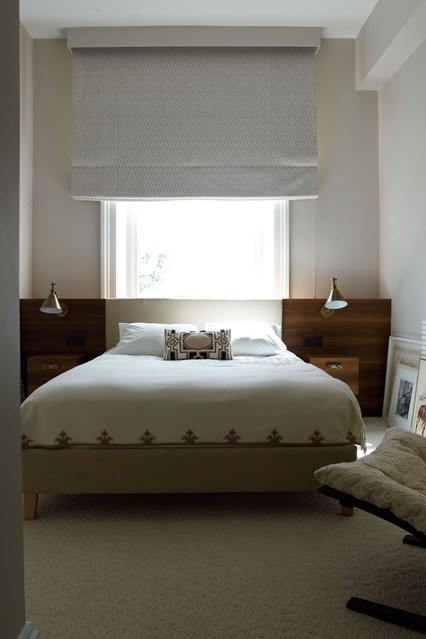
Interior design for small bedroom ideas – light and symmetry
A Murphy bed is another practical solution, beyond colors and hues which open up a room. In the image below, the bed makes room for enough space, allowing the setup of a small working space.
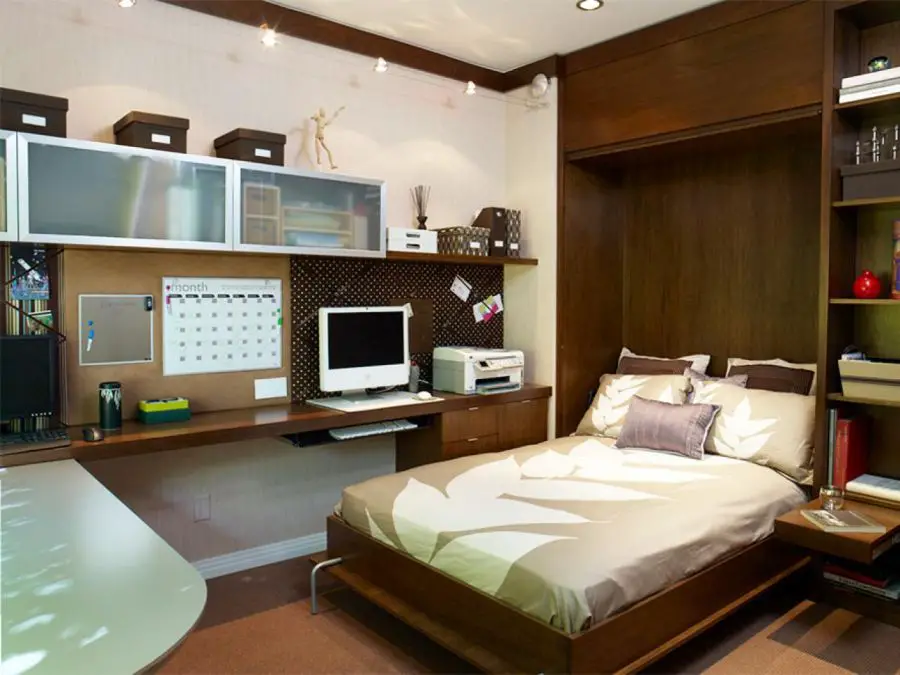
Interior design for small bedroom ideas – a Murphy bed works wonders
Again, a space opened up through use of soft colors, such as a creamy palette enveloping the room, with small patterns breaking the chromatic monotony.
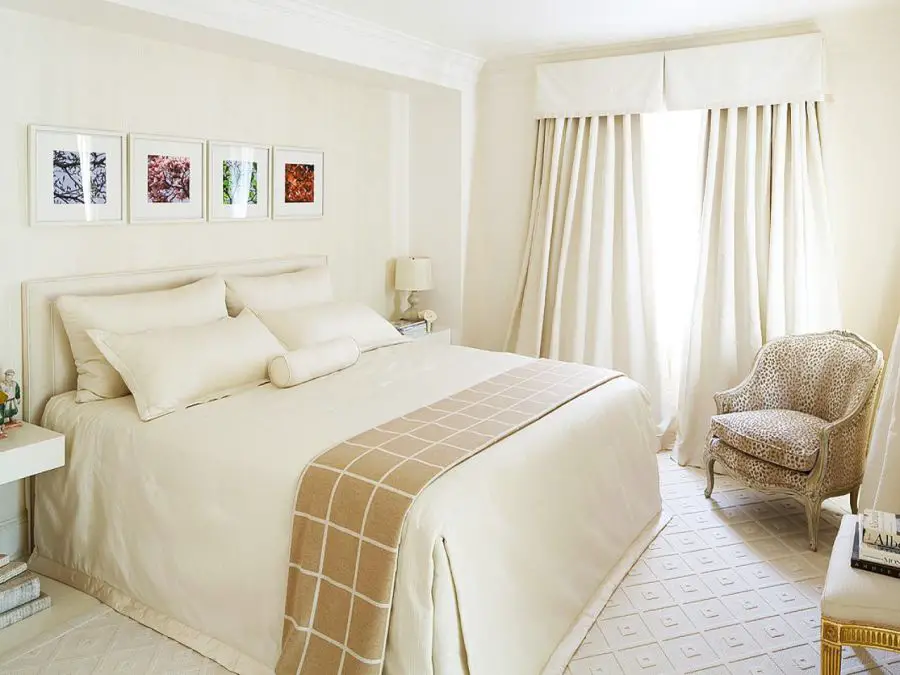
Interior design for small bedroom ideas – a creamy room
Vibrant colors in combination with neutral, softer hues create the feeling of a space in motion. The bare wooden floor makes up a second visual focal point, somehow balancing the room wrapped up in an avalanche of colors.
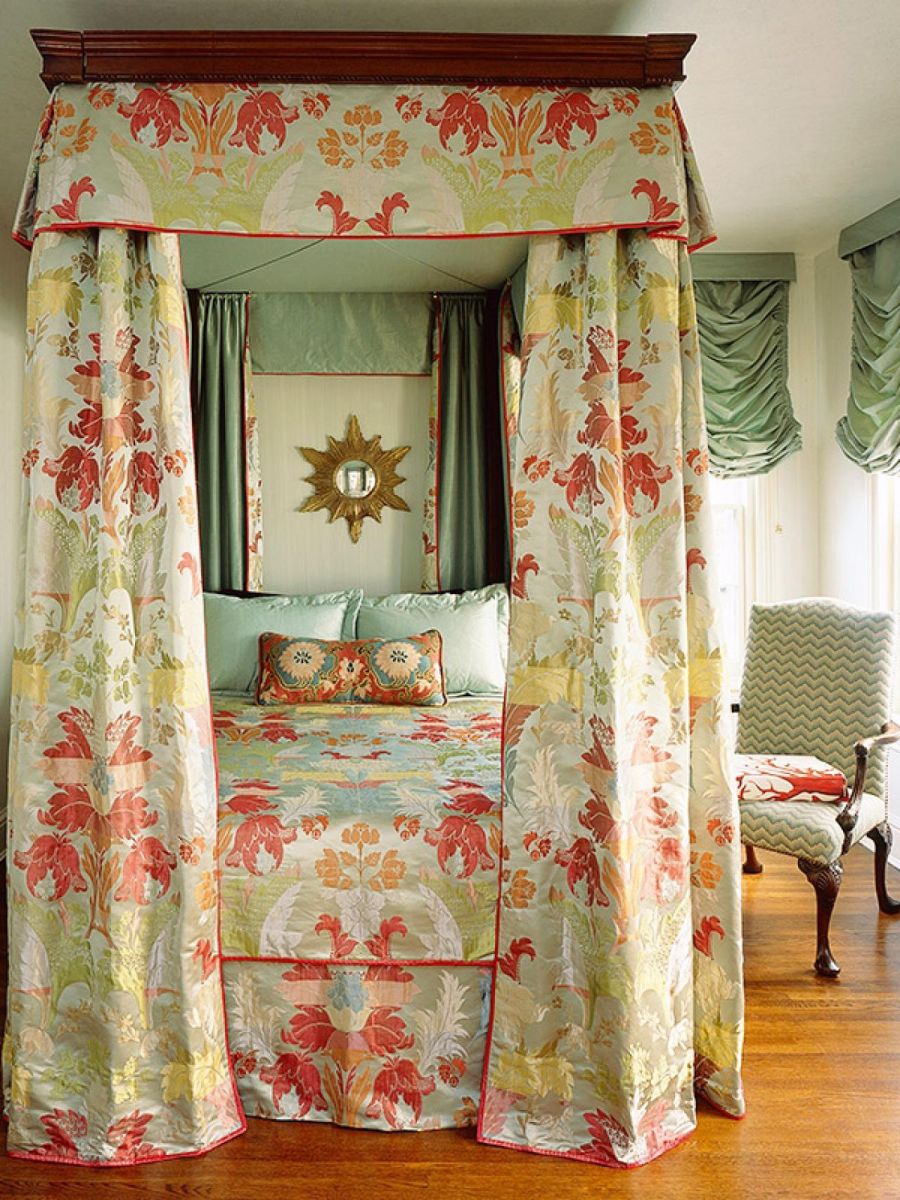
Interior design for small bedroom ideas – vibrant colors
Sources: Freshome.com, Houseandgarden.co.uk, Hgtv.com















